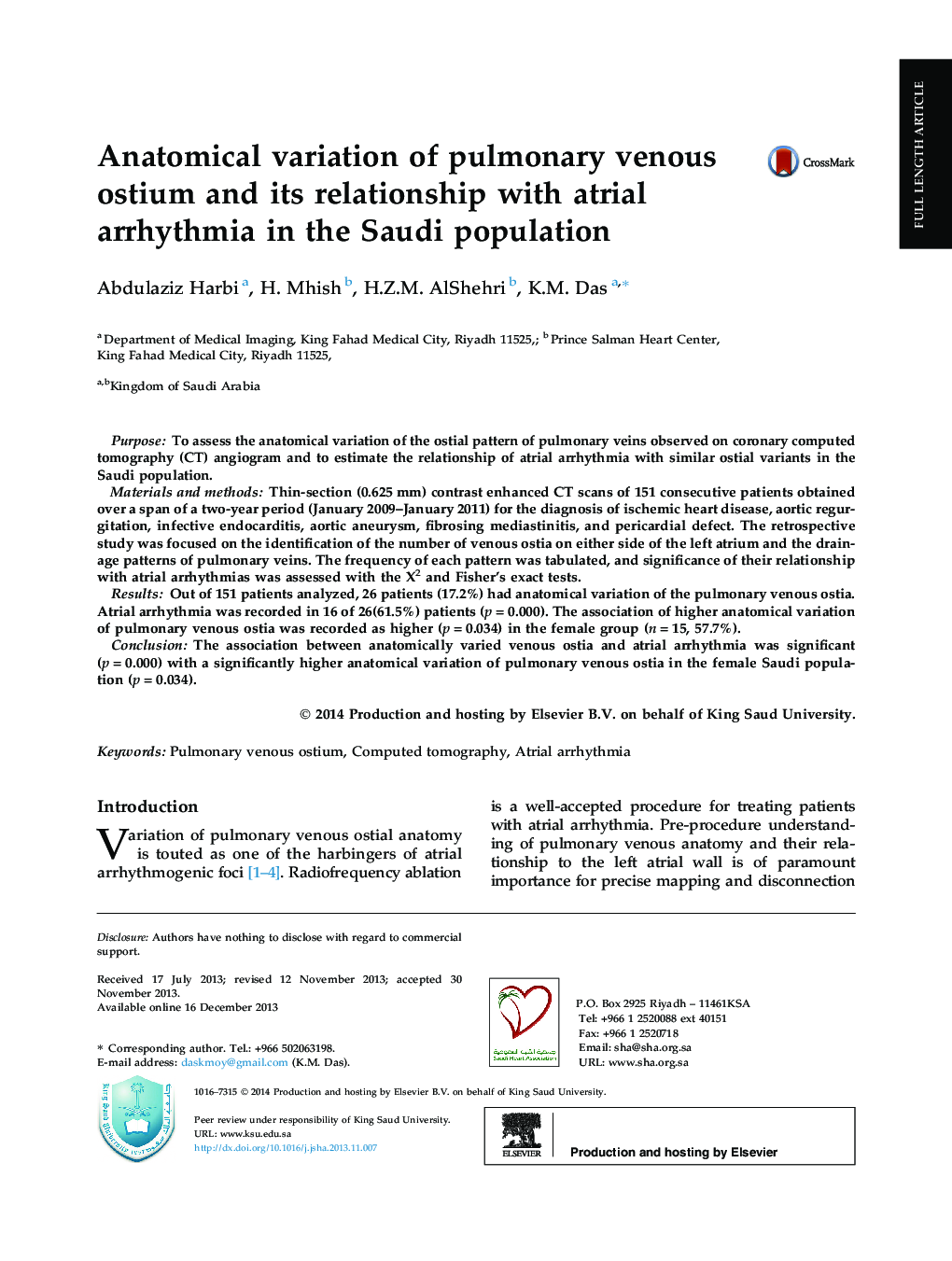| Article ID | Journal | Published Year | Pages | File Type |
|---|---|---|---|---|
| 2978037 | Journal of the Saudi Heart Association | 2014 | 5 Pages |
PurposeTo assess the anatomical variation of the ostial pattern of pulmonary veins observed on coronary computed tomography (CT) angiogram and to estimate the relationship of atrial arrhythmia with similar ostial variants in the Saudi population.Materials and methodsThin-section (0.625 mm) contrast enhanced CT scans of 151 consecutive patients obtained over a span of a two-year period (January 2009–January 2011) for the diagnosis of ischemic heart disease, aortic regurgitation, infective endocarditis, aortic aneurysm, fibrosing mediastinitis, and pericardial defect. The retrospective study was focused on the identification of the number of venous ostia on either side of the left atrium and the drainage patterns of pulmonary veins. The frequency of each pattern was tabulated, and significance of their relationship with atrial arrhythmias was assessed with the X2 and Fisher’s exact tests.ResultsOut of 151 patients analyzed, 26 patients (17.2%) had anatomical variation of the pulmonary venous ostia. Atrial arrhythmia was recorded in 16 of 26(61.5%) patients (p = 0.000). The association of higher anatomical variation of pulmonary venous ostia was recorded as higher (p = 0.034) in the female group (n = 15, 57.7%).ConclusionThe association between anatomically varied venous ostia and atrial arrhythmia was significant (p = 0.000) with a significantly higher anatomical variation of pulmonary venous ostia in the female Saudi population (p = 0.034).
